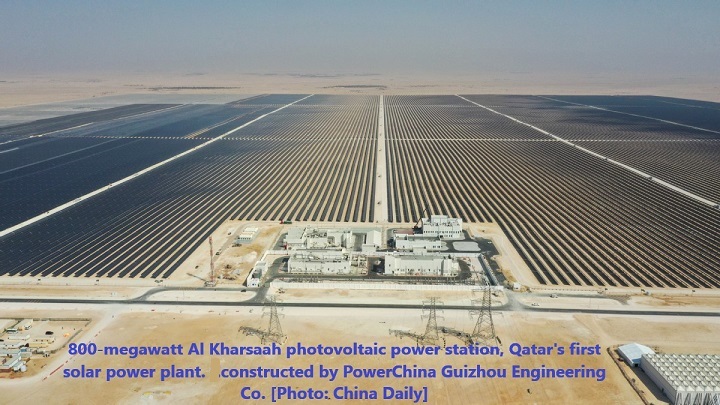
China is making substantial green energy investments in infrastructure endeavours in Africa, the Middle East and Central Asia. In Africa, China’s work in alternative energy reached a historic high in 2023 of about US$2.7 billion.
Alternative energy work in the Middle East totalled US$9.48 billion from 2018 through 2023. That figure dwarfs the US$2.23 billion spent over the previous decade. Central Asia set its own record last year, with US$1.3 billion of investment from China.
China’s Belt and Road Initiatve (BRI) has pivoted to what Beijing officials call “small but beautiful” projects. They’re geared to shun pollution while still promoting green or sustainable economic development. The initiative now places less emphasis on mega infrastructure like ports, roads and airports.
China’s energy engagement last year was already the greenest in absolute and relative terms under the BRI, accolrding to the Green Finance and Development Centre at Fudan University.
Countries in Central Asia, the Middle East, and Africa – especially poorer ones – are feeling the heat from climate change, with extreme weather events spurring overhauls in power generation to cut carbon emissions by 45 per cent by 2030 in line with United Nations goals.
Commitment to clean energy is increasing, and China is one of the biggest partners capable of achieving those goals. China has harnessed its competitive advantage in policy consistency and kept capital costs low to lead the world market in solar and wind power exports, the SCMP said, citing a 2022 study by the Fairbank Centre for Chinese Studies.
The SCMP article listed some key examples:
- In Qatar PowerChina Guizhou Engineering christened an 800-megawatt photovoltaic station in 2022 as the oil-rich Middle Eastern nation’s first non-fossil fuel power plant. High heat and yellow sand in Qatar’s hotter months increase reflectivity at the station site 80km (49.7 miles) from the capital Doha, the Huanqiu.com news website in China reported. The collection of solar energy reflected from the ground raises power generation by 10 to 15 per cent.
- Solar energy comprises part of China’s US$6 billion in investments in Egypt,and the two nations expect to explore renewable hydrogen together.
- The United Arab Emirates has identified green technologies from China as a source of “significant potential for growthr.
- The African island nation of Mauritius is accepting Chinese investments in solar energy to meet its carbon reduction target.
- In Kenya, China Jiangxi Corporation for International Economic and Technical Cooperation and Kenya’s Rural Energy Authority have built an unusually large photovoltaic electricity station.
- In Uzbekistan, photovoltaic panels from China will help power a 1GW project built to use the Central Asian country’s abundant sunshine for 2.4 billion kilowatt hours of clean energy per year, Xinhua said in October. The project is expected to cut carbon emissions by up to 2.4 million tonnes.
- Neighbouring Kazakhstan sees green technology as a “promising area of cooperation” with China.
Source: South China Morning Post, 10 Feb, 2024. https://www.scmp.com/economy/china-economy/article/3251576/china-funds-clean-energy-belt-and-road-partners-fuelling-green-transition-and-salving-chafed